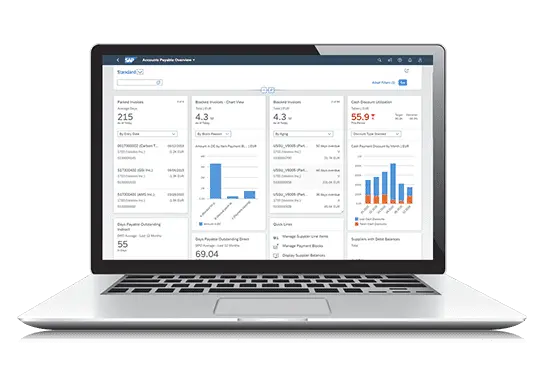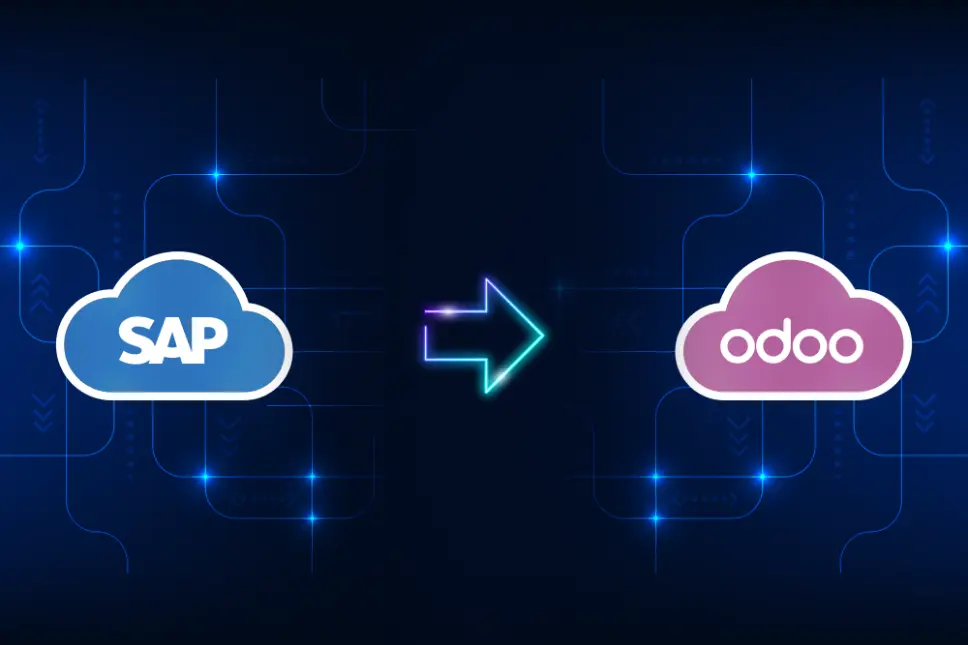Malaysia's business environment is evolving in 2025 and beyond as the government has mandated a nationwide e-invoice regulatory structure. This regulatory requirement is not just another form of paperwork digitization - it's a structure that is transforming company operations, reporting, and competition in an increasingly digital economy. In the eyes of business owners, achieving compliance is critical, the penalties for non-compliance are severe, and the right ERP platform can make or break your journey's resolve.
This practical guide will provide a framework of how Odoo and SAP ERP, two of the world's leading ERP suppliers, have adapted to the new e-invoicing era prevalent in Malaysia. This practical guide will provide you with a regulatory context, to give you an impartial view of both platforms from a compliance perspective, and suggest some next steps for Malaysian businesses when gearing up for 2025 and beyond.
E-Invoicing in Malaysia: The Facts Business Owners Need to Know
The Inland Revenue Board of Malaysia (LHDNM) has introduced a mandatory e-invoicing framework aimed at enhancing tax compliance, improving transparency, and minimizing fraud and errors through electronic invoice validation and storage. Initially, the rollout began with large taxpayers (with annual turnover above RM100 million) starting from August 2024.
In June 2025, the government revised this rollout into a phased schedule to accommodate businesses of various sizes:
- Businesses with annual revenue above RM5 million up to RM25 million: compliance by 1 July 2025
- Businesses with annual revenue above RM1 million up to RM5 million: compliance by 1 January 2026
- Businesses with annual revenue up to RM1 million: compliance by 1 July 2026
This approach ensures that smaller companies have sufficient time to adapt while continuing the government's push toward nationwide digital tax transformation.
To support the implementation, LHDNM launched MyInvois, a centralized platform for uploading, validating, and storing all e-invoices in compliance with national regulations.

The ramifications can be serious, for example, significant fines for non-compliance, future audits of the e-invoicing process, or other reputational risks. Failure to comply with statutory e-invoicing obligations or processes can cause payment delays or friction with customers or suppliers. Early compliance with e-invoicing by businesses will reap long-term benefits of efficiency, transparency, and trust with partners and regulators, as well as avoiding unnecessary risks and gaining a competitive advantage.
How Odoo Supports E-Invoicing in Malaysia
Odoo is famous for its modular, open-source systems approach and has shown its ability to change functions quickly to reflect the requirements for Malaysian e-invoicing. Odoo now has a native integration with MyInvois starting at Odoo 17+, satisfies the e-invoicing requirements and e-invoice submission, and the procedures of LHDNM which are required for businesses to draft, send and track invoices digitally, maintain a proper audit trail, and manage invoice requests. Odoo automates invoice workflows, which also include system execution accuracy and eliminates any manual interventions and potential errors that could occur with bad manual practices.
The system provides real-time invoice submission and tracking capabilities. Digital invoice submissions through Odoo are real-time submissions of an e-invoice, and suppliers will be able to track the status of the invoices in real-time. You can safely assume with the Odoo workflow system that all invoices meet government format and data requirements prior to submission, and you can track the invoice status in real time to provide transparency to your business and to deal with any outstanding submissions quickly.
Odoo includes localization for Malaysian GST, SST, and other regulated specifications with multi-currency and bilingual to support businesses working with international clients and suppliers. Odoo's module structure allows businesses to turn on only the processes they require for governance, which means quicker implementation and lower cost. Third-party applications cover integration with Malaysian banks, payment gateways, and accounting software for truly end-to-end automated installations.
How SAP ERP Covers Regulatory Changes
SAP is a global leader in the ERP space. Given SAP's vast compliance experience, the company leveraged this strength to build support for Malaysian e-invoicing. SAP's Malaysian localization package has built-in support for MyInvois, tax codes, and statutory reporting, as well as a framework for SAP's regular software upgrades to comply with ongoing changes from LHDNM.
SAP connects to MyInvoice using secure APIs which allow automated invoice submission and validation. Companies can modify, based on preferences, the approval chains, notifications and exception handling in SAP's workflows. The analytics modules in SAP are very useful, with real-time compliance dashboards, audit log and exception reports available. It also has modules for specialized industries, such as manufacturing, distribution and logistics that have complex compliance requirements
SAP also provides localization in conjunction with certified partners in Malaysia, as well as training and support which accommodate large companies. External companies with multiple entities and operations could benefit from SAP's scalable platform.
Comparing Odoo and SAP ERP for E-Invoicing Compliance
Both platforms offer MyInvois integration, though Odoo provides this natively and free with version 17+, while SAP requires additional add-ons. Both systems support real-time invoice tracking and built-in compliance with LHDNM rules. However, they differ significantly in implementation costs, with Odoo offering a lower-cost solution compared to SAP's higher investment requirements.
Feature | Odoo ERP (2025) | SAP ERP (2025) |
MyInvois Integration | Native, free with Odoo 17+ | Available via add-ons |
Real-Time Invoice Tracking | Yes | Yes |
Compliance with LHDNM Rules | Built-in | Built-in |
Cost to Implement | Lower | Higher |
Customization Flexibility | High | Moderate |
Support for SMEs | Strong | Moderate |
Audit Trail & Reporting | Included | Advanced, sector-specific |
Partner Ecosystem | Growing, local focus | Established, global/local |
Suitability by Business Size
Small to Medium Enterprises (RM1M-100M revenue):
- Odoo: Perfect fit - scalable, cost-effective, quick implementation
- SAP: Overkill - too complex and expensive for most SME needs
- Recommendation: Odoo
Large Enterprises (RM100M+ revenue):
- Odoo: Suitable for straightforward operations
- SAP: Better for complex multi-entity, multi-country operations
- Recommendation: Depends on complexity, but Odoo often sufficient
Multi-National Corporations:
- Odoo: Good for standardized processes across countries
- SAP: Superior for complex compliance across multiple jurisdictions
- Recommendation: Odoo for most cases, SAP ERP only for highly complex scenarios
Learn more: Odoo vs SAP: Choosing the Perfect Match for Your Growth Journey in Malaysia
Technical Implementation Approaches
Odoo offers a variety of technical benefits for companies leveraging its functionality, including a direct RESTful API connection to MyInvois, automatic retries on failed submissions, real-time status tracking in the UI, and the capability to submit invoices in bulk. Before sending an invoice, Odoo will validate pre-submission criteria against LHDNM requirements, map tax codes automatically, sync customer/vendor data, and provide easy to use error resolutions.
In the context of workflow, Odoo can leverage automated processes, customizable approval workflow, automated notifications on failed submissions, interaction with existing accounting processes, and multi-company capability for business groups.SAP's technical implementation demonstrates an enterprise-grade architecture with advanced audit logging, compliance reporting, workflow engine, and integration with a wide ecosystem of SAP ERP platforms. However, it requires specialist technical skills, and has significantly more configuration and maintenance, it requires greater infrastructure, and may potentially introduce vendor lock-in concerns.
Odoo's implementation has a direct approach that lasts approximately a ten week time frame, categorized into four major phases - discovery and planning, configuration and setup, testing and training, and go-live support. Each phase has specific deliverables with timelines attached and makes it attainable for a business of any size.
SAPs implementation must be more significantly larger undertaking of approximately eighteen months categorized into assessment and planning, development and configuration stage of formal processes, testing and training, and deployment.The extended timeline reflects the complexity of SAP implementations and the need for comprehensive system integration.
Future-Proofing Your Investment
In addition to e-invoicing, regulatory changes include digital tax compliance reporting, real-time transaction tracking, better audit trail, and cross-border e-invoicing regulatory requirements. Odoo has some notable differentiators with rapid cycle update times, a strong local developer community in Malaysia, a flexible architecture to accommodate future changes for development, and cheaper compliance updates; whereas, while SAP has an approach for comprehensive compliance, the updates are slower in compliance cycle times and more expensive in regulatory updates, which can add costs to enterprise change management.
Both platforms are currently investing in AI-enabled compliance checking, anomaly detection, and predictive analytics functionality for compliance regulatory updates. There is an ongoing requirement for ERP systems to adapt to new mandates, and companies investing in their digital compliance now are better positioned for growth, partnerships, and likely funding in the future. While state authorities in Malaysia encourage digital adoption and upskilling, ERP vendors are working with regulators to have smooth transitions and robust support as new regulations will introduce ongoing compliance changes.
Professional Recommendation: Odoo as the Clear Winner
Odoo provides undeniably better value for e-invoicing compliance in Malaysia for 95% of Malaysian businesses and is the best option for the running of the business overall. The combination of native MyInvois integration, exponentially lower cost with a far shorter timeframe for implementation, and better experience makes it an unequivocal winner in the Malaysian context.
What Makes Odoo a Better Solution for Malaysian Companies than SAP ERP

The compelling evidence supports Odoo as the better option for Malaysian corporations transitioning to e-invoicing compliance. Whereas SAP's approach is complex, cumbersome, expensive and difficult to modify, Odoo provides a simpler path to compliance without compromising on functionality or scalability. Odoo integrates completely with MyInvois, thus removing the need for costly add-ons, while its overall user experience and speed of deployment is much more favorable.
Even large giants with complex needs should test Odoo thoroughly before resorting to SAP. The 3-5x cost differential between SAP and Odoo ERP is not easy to justify unless honed uniquely to a corporate enterprise including extremely complex multi-jurisdictional requirements that necessitate SAP's enterprise class complexity. Odoo offers capabilities well beyond infringing on the true needs of most companies in Malaysia, even future growth.
The Migration Imperative
For existing SAP users, the move to Odoo is not only cost effective, but a business necessity. With Malaysia's e-invoicing requirement coupled with Odoo's better compliance capabilities, this is the ideal time for those companies to invigorate their operations while saving costs at the same time. Companies that continue to delay this inevitable transformation will continue to be restricted to one of the most cumbersome and costly enterprise systems that sees increasing spirals of complexity, with returns diminishing year on year.
Migration is an involved process and careful consideration needs to be done before the migration, during the migration, and after the migration to optimize the benefits. Migration can deliver immediate benefits SMART planning helps ensure that the new benefits accumulate through time with every month's passing week. The sixteen-week migration approach has already been show on several implementations in Malaysia and while organizations would be converting systems as opposed to moving over to another one, the conversion still maintain the timely benefit of no disruption in existing operations while maximizing the benefits of the new system.
Why Moving from SAP ERP to Odoo is a Strategic Advantage
In the current Malaysian business environment, migrating from SAP to Odoo represents a compelling strategic decision that goes beyond mere cost savings. The transition offers Malaysian companies a unique opportunity to modernize their operations while achieving superior e-invoicing compliance at a fraction of the cost.
The Compelling Business Case for Migration
Many Malaysian companies are finding it increasingly difficult to manage the quality of implementation, added complexity from stale operational needs (that's out of date - e-invoicing can make change simple and cost effective), and SAPs cost structure, i.e. high cost SAP.
SAP ERP has costly subpar adding on components. Their integration for e-invoicing is less expensive, cost prohibitive, complex, and the user experience has a longer learning curve. All things considered it's relative everyday activity change depending on the available access or another user. The financial implications are considerable; SAP clients decrease their software licensing costs by an estimated 60-80%, while eliminating maintenance contracts (which can be costly) and reducing dependency on learners & expensive SAP ERP specialists.
User Experience and Productivity Gains
The migration brings quick productivity benefits from Odoo's contemporary and easy-to-use interface, allowing a lot less training time and user adoption is significantly higher. Additionally, Odoo is mobile-first which helps to support Malaysia's evolving remote working culture, and Odoo's more basic system architecture is less taxing on IT resources.
Migration Methodology: A Proven Approach

Phase 1: Migration Assessment (Weeks 1-2) The assessment will involve a complete examination of the current state of the SAP system, which includes an inventory and analysis of SAP modules, catalogue of custom code and configuration, collection of integration points with external applications, and capturing of user's workflows documenting how they are currently using the existing system. In addition to the current state assessment, this phase also includes a gap analysis to find the equivalent features in Odoo, identify the level of customization needed for replacement of the functions, whether there are integration requirements, and, most importantly, the extent of migration complexity. The outputs of this phase will provide a comprehensive migration plan that can be used to identify a big-bang or phased migration approach, identify any parallel system running periods, risk mitigation strategies and assign resourcing allocation options.
Phase 2: Data Migration Planning (Weeks 3-4) There are multiple key aspects to this important phase. These key aspects start with a complete data assessment - which includes current master data quality, staff and management expectations of what historical data needs to be retained, anticipated data cleansing and standardization, and how the migration sequence will need to be planned. Included in the technical preparation aspects will be data extraction scripts for extracting master data from SAP, creating data import templates for Odoo, mapping any transformed data requirements, defining validation checks to ensure that master data is in good integrity throughout the migration process.
Phase 3: Parallel Development (Weeks 5-10) The parallel development phase consists of detailed Odoo configuration including chart of accounts mapping, business process configuration, role and permissions set up for users, MyInvois integration configuration. Parallel to this, we will execute all migration activities, master data migration including customers, vendors and products, historical transaction data migration when appropriate, open document migration including sale orders and invoices, and complete all validations and reconciliations.
Phase 4: Testing & Validation (Weeks 11-14) We will perform full system testing, including functional test of all modules, integration testing with existing system(s), MyInvois connectivity validation and performance testing. User acceptance testing will involve validating end user workflows, the accuracy of reports, exception handling testing and testing that mobile access meets operational requirement.
Phase 5: Go-Live & Support (Weeks 15-16) In the final phase of the process we will carry out the cutover, including final data synchronization, switching system over, setting user access and continuous monitoring of system performance. We will provide support commencing in the post migration support phase which will include 7 days a week, 24 hours a day support for the first week. We will educate users on how to address their queries, refine performance, and refine processes as necessary to ensure continued smooth operations.
Addressing Typical Migration Issues
The migration process addresses typical issues with proven solutions. For example, data quality issues are managed with automated data cleansing tools and validating rules. User resistance is managed with proper training and change management programs. Custom reports can be recreated through Odoo's adaptable reporting engine or custom development. Integration complexity can be managed through API-based integration approaches and using Odoo's REST APIs to build integrations. Maintaining regulatory compliance during the transition is managed with parallel running for billing purposes, which utilizes dual-issue invoices that allows for full visibility to maintain compliance throughout the migration process.
Getting Started
The migration process follows steps; an assessment, data migration planning, parallel development, testing and validation, and going-live and support. Typical challenges include data quality issues, user resistance, recreating custom reports, integration complexity, and maintaining regulatory compliance during the transition. Each of these challenges can be managed with proven solutions drawn from our experience in using automated data cleansing tools, implementing comprehensive training programs, using Odoo's flexible reporting engine and custom development, API-based integration approaches, and ensuring that you are maintaining regulatory compliance through parallel running periods.
Conclusion
Malaysia's e-invoicing requirement in 2025 presents businesses with a chance for transformation rather than merely a regulatory exercise. Whether you choose to use Odoo for its ease of use and SME orientation, or SAP ERP for its functionality and scalability, the most important thing is to take action now. Understand your requirements, reach out to local specialists, and take full advantage of your ERP system not only as a route to compliance, but also as a way of competing in the digital economy.
The future is with businesses that see compliance as a springboard for digital transformation, who embrace AI, automation, and the regulations of the day with agility. The success of your business rests on choosing the right platform for the size, complexity, and aspirations of your business while ensuring seamless compliance with developing regulatory compliance schemes in Malaysia.
Ready to ensure compliance and future-proof your ERP strategy? Contact us today to discuss how Odoo can support your business transformation.

Sally N.
BDM - Partner and Alliance
With over 7 years of experience in ERP advisory, Sally has worked closely with SMEs across Malaysia to streamline operations and drive digital transformation. Her deep understanding of business processes and hands-on approach have made her a trusted advisor to many growing companies. Through this blog post, Sally aims to share practical insights and real-world lessons drawn from her implementation experience, offering guidance to businesses navigating their own ERP journey.
